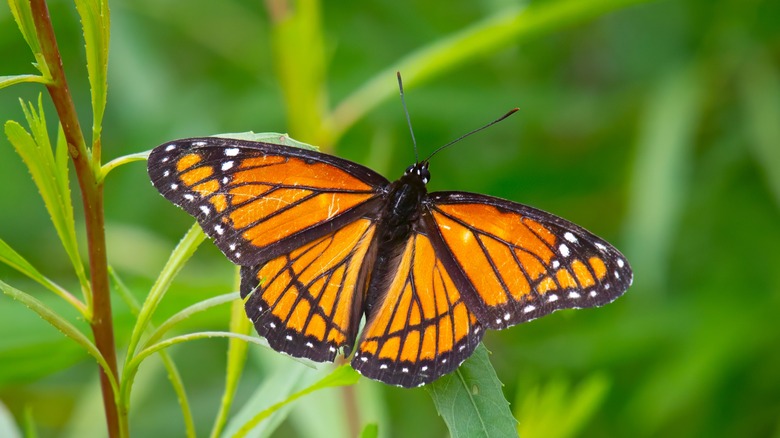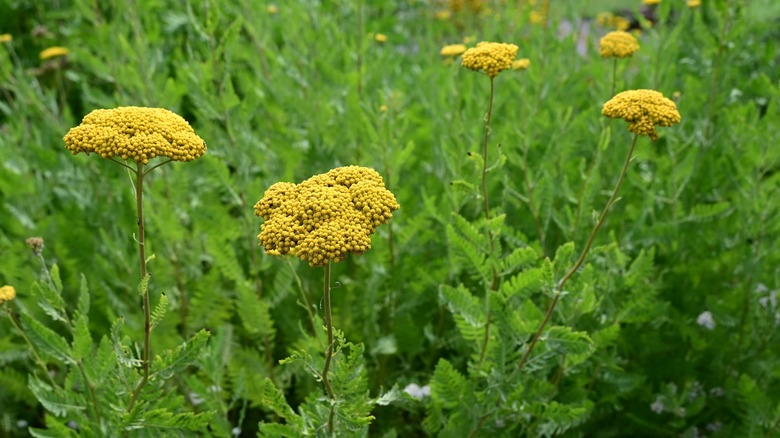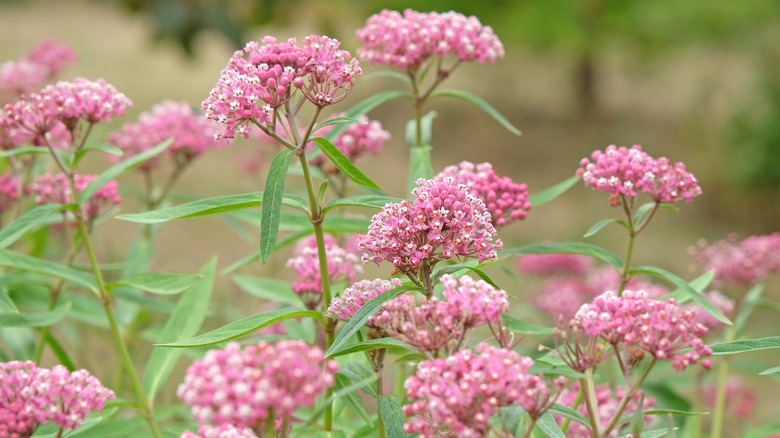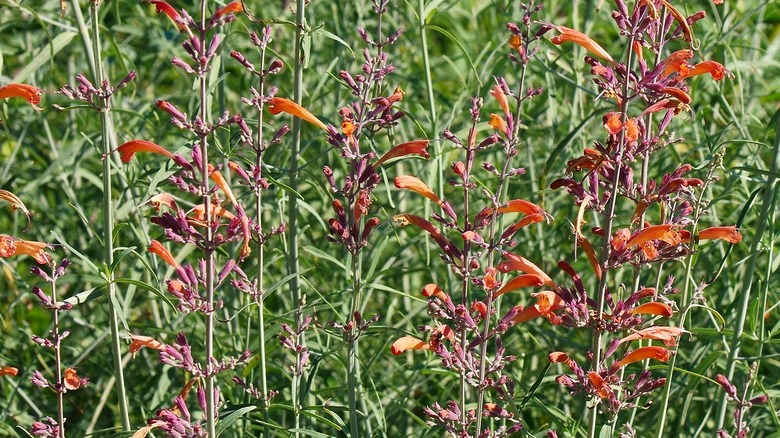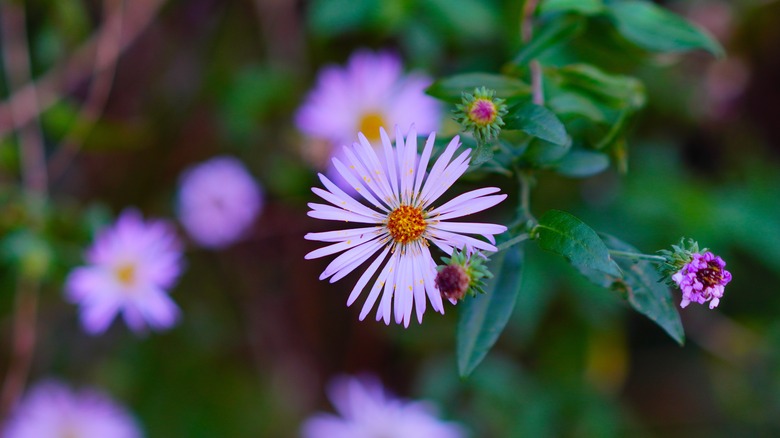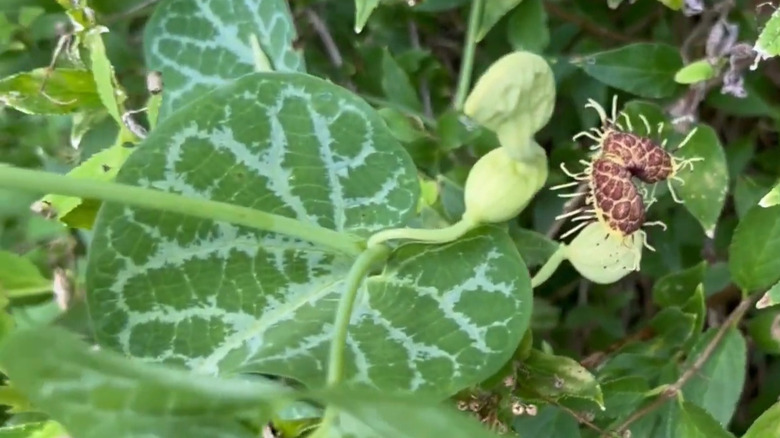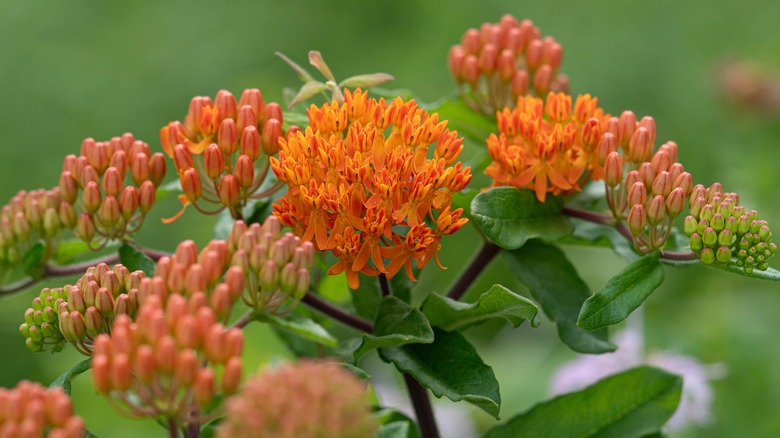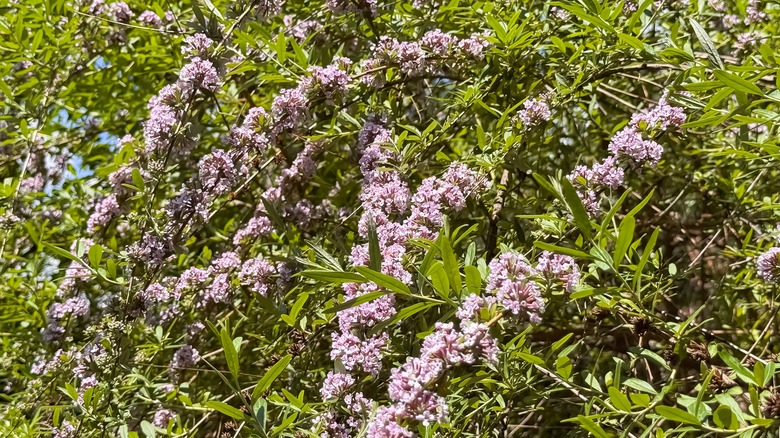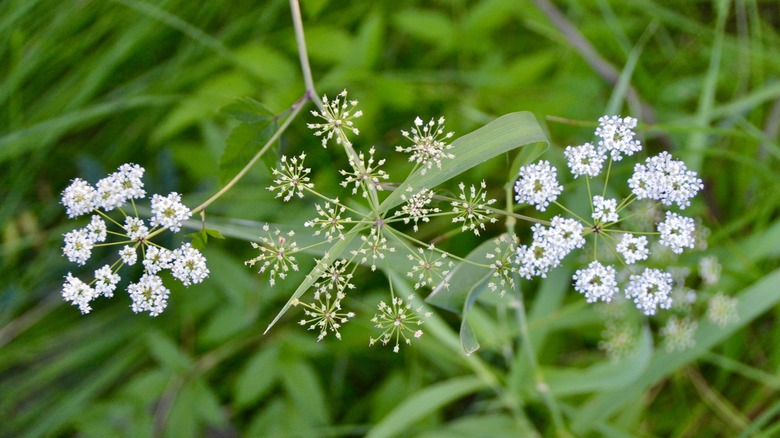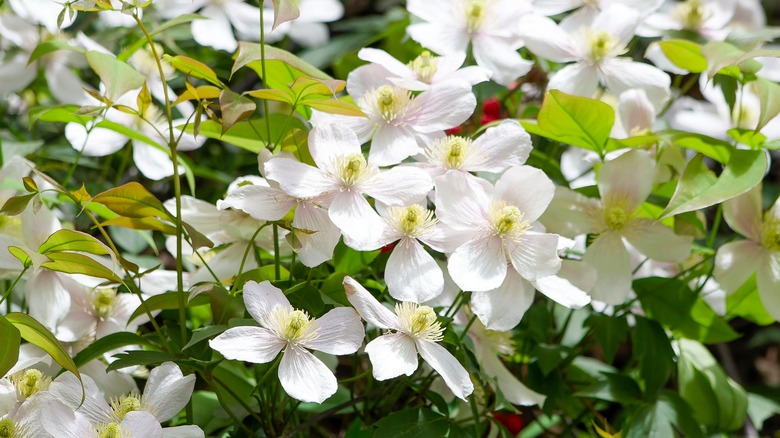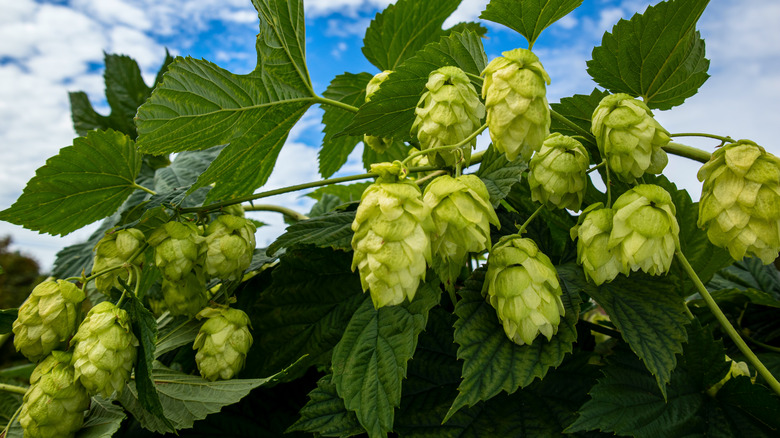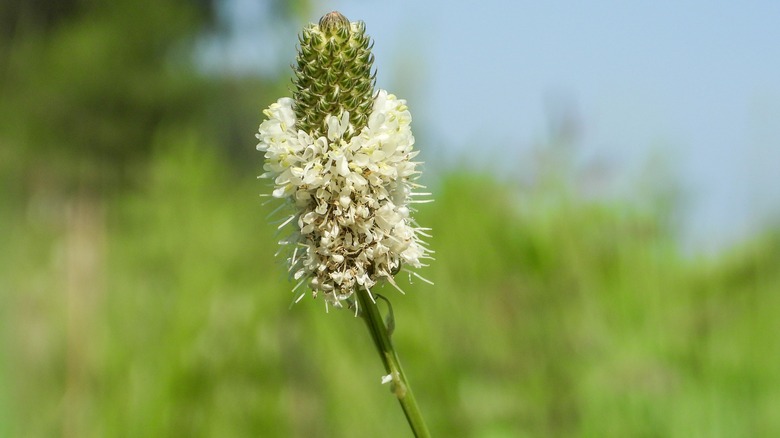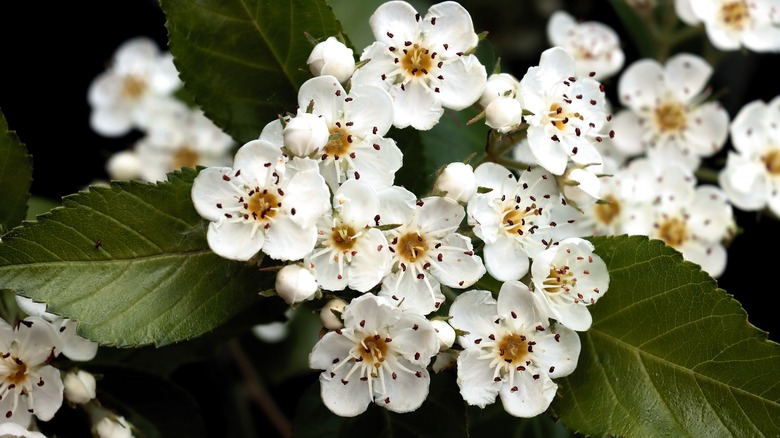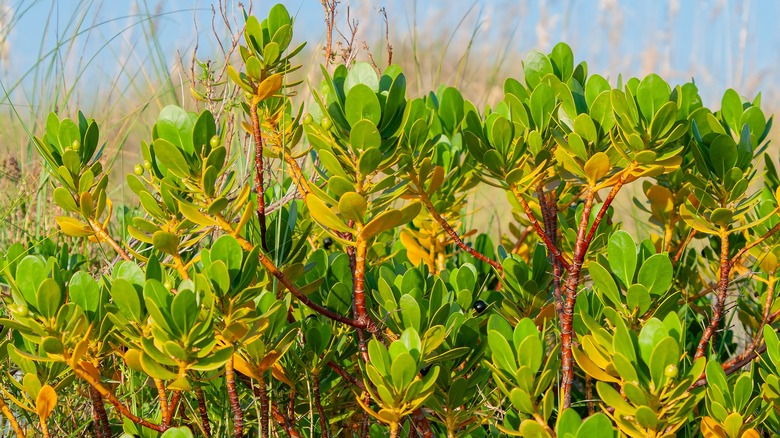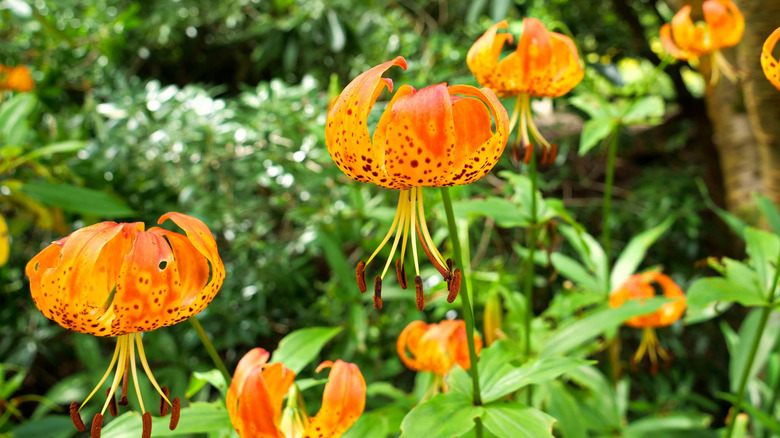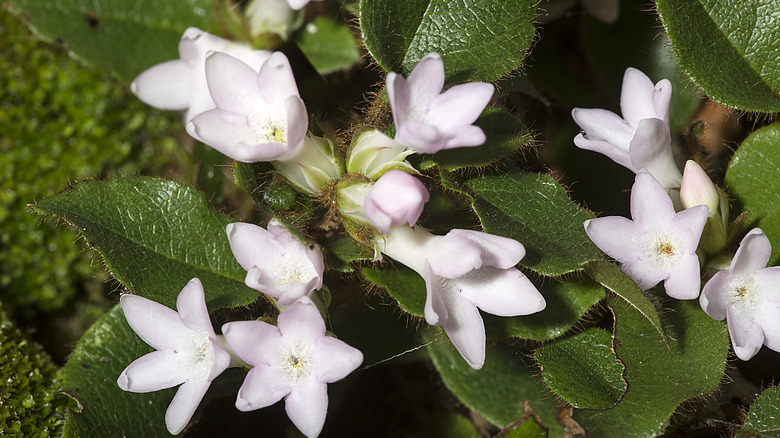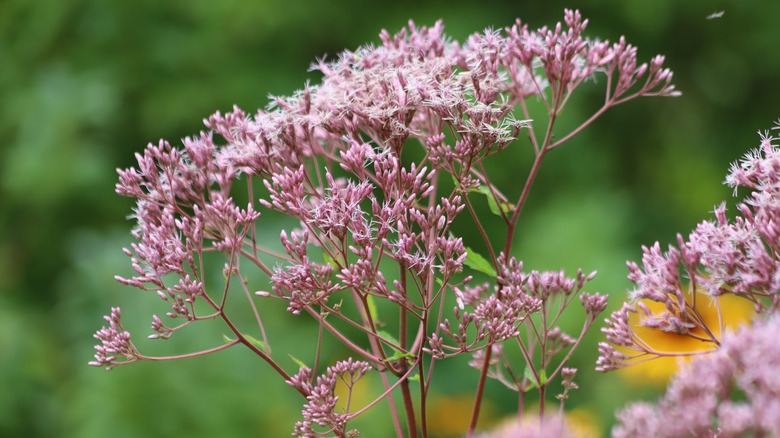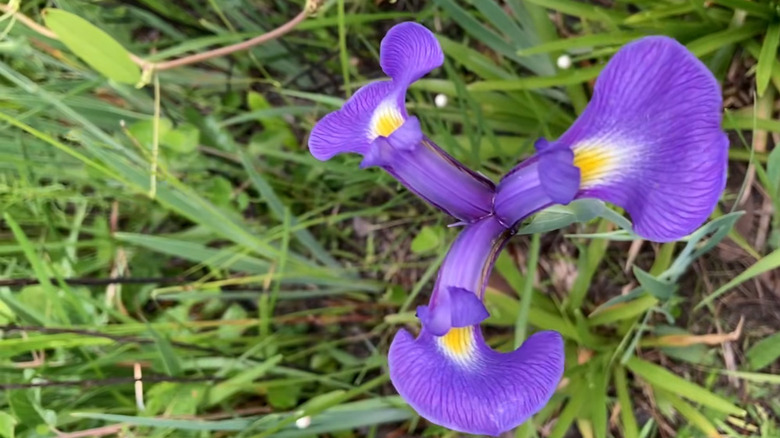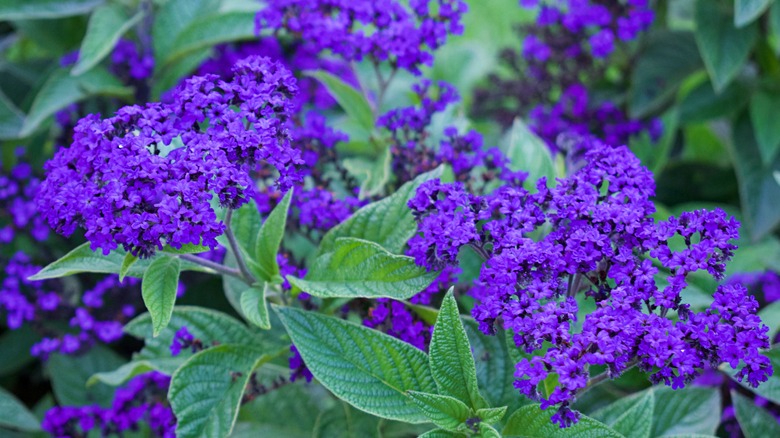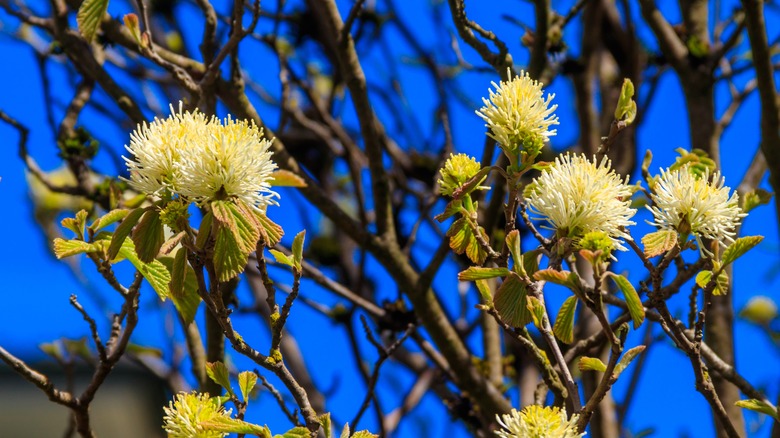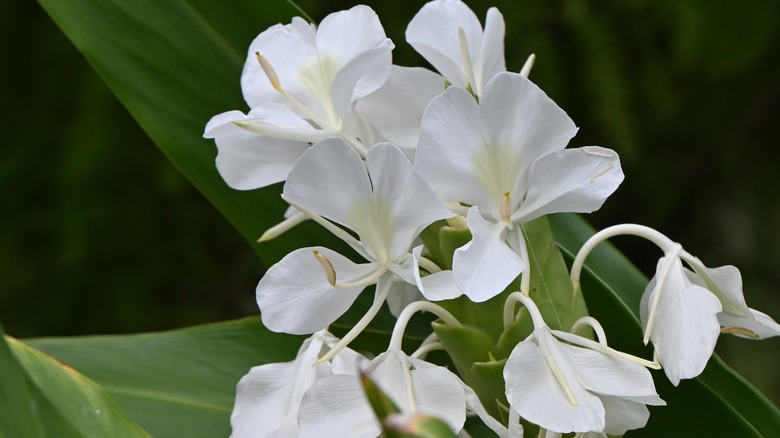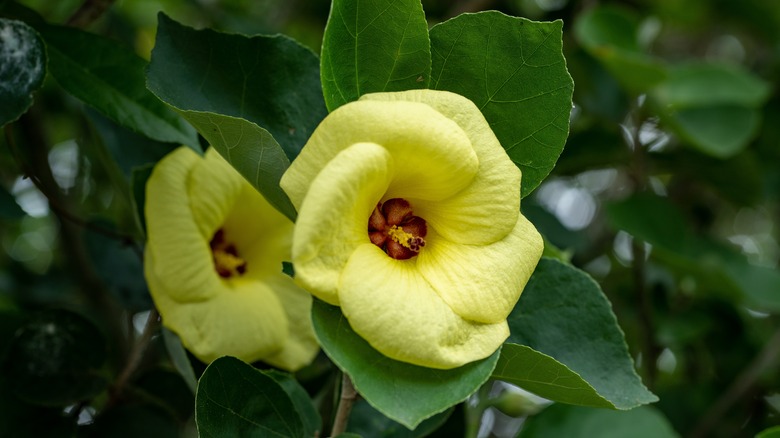The 21 Best Fragrant Plants To Include In Your Butterfly Garden
Fragrance is one of the best ways to draw butterflies to your garden, making it an essential part of choosing the best plants to include in a butterfly garden. Butterflies rely on scent, color, and shape to locate nectar-rich flowers. Their antennae are highly sensitive to fragrance, which often signals an abundant nectar source that they can feed on. By selecting plants like butterfly weed, fountain butterfly bush, and common hops that have strong fragrance and plenty of nectar, you invite these delicate visitors in greater numbers, and ensure they stay longer, feeding and pollinating throughout your garden.
Building a butterfly garden isn't just about fragrance, though. Having a butterfly garden creates a habitat that supports butterflies at every stage of life, from caterpillar to adult. A well-planned butterfly garden has sunny spaces for warming, shallow puddles for water, and blooms that can carry butterflies through their active seasons. There are plenty of plants that will fill your garden with a variety of butterflies, and diverse plantings — annuals, perennials, and shrubs — ensure a steady food supply, while host plants give caterpillars the nourishment they need to grow.
A butterfly garden strengthens declining populations by providing shelter and food in landscapes often stripped of habitat. At the same time, it adds color, life, and movement to outdoor spaces, with over 700 species potentially visiting across the United States. Butterflies also play an ecological role, pollinating flowers and linking food chains. By combining fragrance with variety and thoughtful structure, you can create a garden that benefits wildlife and people.
Fernleaf yarrow
Fernleaf yarrow (Achillea filipendulina) is a hardy perennial that adds color and structure to butterfly gardens. Native to central and southwestern Asia, it grows best in USDA zones 3 to 9 and tolerates heat, drought, and poor soils with ease. Strong stems hold broad, flat-topped clusters of golden-yellow flowers that reach up to 4 inches across — an ideal landing pad for butterflies, which must rest while feeding. The bright blooms appear from June to August, releasing a spicy fragrance. With silvery, fernlike foliage and long-lasting flowers, fernleaf yarrow can support butterflies all summer.
Swamp milkweed
Swamp milkweed (Asclepias incarnata) is one of the most important flowers for gardens in zones 3 to 9 because milkweed plants serve as a nectar source and larval host for monarch butterflies. Its clusters of flowers are perfectly shaped for butterflies, offering the flat landing platforms and nectar cups they need to feed with ease. Blooming in summer, it prefers moist soils, yet adapts well to loam or clay. While the toxic compounds in its foliage protect monarch caterpillars from predators, they also cause the plant to be poisonous to humans and animals that may eat it.
Sunset hyssop
Sunset hyssop (Agastache rupestris) adds a vivid burst of color to butterfly gardens throughout summer and fall. Native to the southwestern United States, this licorice-scented perennial grows well in zones 5 to 8 and prefers full sun or partial shade in soil that has good drainage. Its tall spikes of tubular, purple and orange flowers are attractive to butterflies, who are known to enjoy both colors. Reaching up to 3 feet in height, sunset hyssop is low maintenance and can even tolerate sand and shallow, rocky soil.
Climbing aster
Climbing aster (Ampelaster carolinianus) is a vigorous perennial vine that adds late-season color and fragrance to butterfly gardens in zones 6 to 9. From September to November, it bursts into pink and purple blooms with golden centers. This plant is particularly valuable as a larval host for the Pearl Crescent butterfly, whose caterpillars rely on its foliage. The flowers also draw a wide range of butterflies, bees, and other beneficial insects. It grows more than 10 feet tall, thriving in full sun to partial shade and tolerates everything from moist clay to loamy soils, even with seasonal flooding.
White-veined hardy Dutchman's pipe
White-veined hardy Dutchman's pipe (Aristolochia fimbriata) is a groundcover that gardeners in zones 7 to 9 should consider vital for their butterfly gardens. This low-growing perennial forms a dense mat of heart-shaped leaves with white veining, which serve as a larval host for the Pipevine swallowtail caterpillars that feed on its foliage. While invaluable for butterflies, it carries a high toxicity to humans — ingestion of any part may cause irreversible kidney damage. Careful placement should be considered when adding this plant to your garden.
Butterfly milkweed
Butterfly weed (Asclepias tuberosa) is a perennial used for butterfly gardens, which grows best in zones 3 to 9. Its clusters of bright orange to yellow-orange blooms rise above its upright stems from late spring through to summer, drawing in butterflies and other pollinators with its abundance of nectar. The flower's flat-topped clusters and tubular shape provide easy landing spots and access to nectar for butterflies, and this native plant is known as a larval host for monarchs, queens, and gray hairstreaks. Adaptable and drought-tolerant, butterfly milkweed flourishes in sunny, well-drained soils.
Fountain butterfly bush
The fountain butterfly bush (Buddleja alternifolia) is a graceful shrub with arching stems that are often compared to a weeping willow. In late spring to early summer, gardeners will see its stems bloom with fragrant lilac blooms. These tubular flowers, which are tightly packed along the stems, are irresistible to butterflies and hummingbirds, offering nectar and landing space to your visiting pollinators. Hardy in zones 5 to 9, the fountain butterfly bush shrub grows best in full sun and well-drained soils, but tolerates clay or dry ground once established.
Water hemlock
Water hemlock (Cicuta maculata) is a perennial plant that is a good choice for butterfly gardens. Rising to a height of up 8 feet, its purple-streaked stems hold umbrella-shaped clusters of tiny white flowers that bloom through summer. These nectar-rich blooms draw butterflies and other short-tongued pollinators in, while also serving as a host plant for black swallowtail caterpillars. It can be found in zones 5 to 9, usually in moist or wet soils, though it also tolerates sandy edges and loamy ground. Every part of this plant is highly toxic, and it is considered a noxious weed in Nevada.
Mountain clematis
Mountain clematis (Clematis montana) is a vigorous woody vine that brings plenty of pollinator value to butterfly gardens. Native to the Himalayas and parts of Asia, this perennial grows best in zones 6 to 9, where its star-shaped blooms appear in late spring and summer. The flowers of this plant come in pink, purple, red, or white, offering several colors that butterflies are known to seek out. The flowers are also fragrant, filling the air with a vanilla-like scent. Mountain clematis prefers full sun to partial shade and well-drained, organically rich soil.
Common hops
Common hops (Humulus lupulus) is a hardy perennial vine that grows in zones 5 to 8, climbing vigorously on supports and returning reliably each year. Its green to yellow flowers open in midsummer and bloom into fall, releasing a light pine or citrus fragrance. Though modest in size, these flowers attract pollinators and are host plants for red admiral and question mark butterflies. Wild hops also serve as the host plant for the rare hops blue butterfly in Colorado. Preferring moist, well-drained soils in sun to partial shade, common hops add both structure and wildlife value to gardens.
White prairie clover
White prairie clover (Dalea candida) is a resilient perennial that can be grown in butterfly gardens in zones 3 to 8. Native to the central United States, it grows spikes of flowers in midsummer, with tiny white blooms that open gradually from the base and travel up to the tip of the flower. These nectar-rich blooms attract butterflies, serving as a host plant for the yellow dogface butterfly. Its deep taproot makes it highly drought-tolerant and allows it to enrich the soil through nitrogen fixation. Grow it in full sun and well-drained soils.
Apple hawthorn
Apple hawthorn (Crataegus aestivalis) is a deciduous shrub (though it can also be grown as a small tree) that can support butterflies when grown in gardens in zones 6 to 11. In spring, it grows groups of white, five-petaled flowers that provide nectar to pollinators and serve as a larval host for gray hairstreak, red-spotted purple, and viceroy butterflies. This slow-growing plant can reach 30 to 40 feet tall and adapts to a range of soils, though it naturally thrives in moist or wet sites. Plant in full sun to partial shade for best growth.
Inkberry
Inkberry (Ilex glabra) is one of the evergreen hedges and shrubs that provide privacy in winter, but it's also well-suited to butterfly gardens in zones 4 to 11. Native to the southeastern United States, this plant grows 5 to 10 feet tall and displays glossy leaves that remain green through winter. In late spring, its greenish-white flowers provide nectar for pollinators and serve as a host for the Henry's elfin and holly azure butterflies. Inkberry can adapt to sandy or clay soils, tolerates moist conditions, and grows in full sun or partial shade.
Carolina lily
Carolina lily (Lilium michauxii) is a perennial wildflower native to the southeast and the official wildflower of North Carolina. Blooming in USDA zones 6 through 9, it produces orange and yellow, speckled flowers in midsummer, with recurved petals that arch backward to expose long stamens and a central style. These fragrant blooms attract swallowtail butterflies, which are drawn to their bright color and nectar. Growing 2 to 4 feet tall, the Carolina lily prefers moist, well-drained soil and requires partial sun for best flowering. Its nodding blooms bring both beauty and ecological value to butterfly gardens.
Mayflower
Mayflower (Epigaea repens), also called trailing arbutus, is an evergreen groundcover in the heath family that forms mats in sandy or rocky woodlands. Hardy in zones 2 to 8, it produces clusters of fragrant, tubular flowers in early spring, ranging from pale pink to white. These blooms are a nectar source and host plant for hoary elfin and brown elfin butterflies. The mayflower prefers partial shade with moist, acidic, well-drained soils. Although it is slow-growing and sensitive to disturbance, it is a delicate and valuable addition to butterfly gardens.
Hollow Joe-Pye weed
Hollow Joe-Pye weed (Eutrochium fistulosum) is a great example of low-maintenance perennial plants that hardly need any attention to thrive. It grows 4 to 7 feet in height, has hollow reddish stems and whorled leaves, and produces dome-shaped clusters of pink to purple flowers from midsummer into fall. The vanilla-scented blooms are rich in nectar, drawing in butterflies, such as pearl crescents, to gardens. Best suited to moist, fertile soils in sun or partial shade, it grows best in zones 4 to 8, and its stature makes it ideal for pollinator gardens.
Savannah iris
Savannah iris (Iris tridentata) is a native perennial with fragrant, blue-purple flowers that bloom from May to June, rising on tall green stalks above the foliage. Purple blossoms are known to be attractive to butterflies, and these wide, veined sepals offer excellent landing spots. Best grown in moist to wet sandy soils, Savannah iris enjoys rain gardens, boggy beds, or being planted along ponds. It prefers partial sun to light shade, though it can also grow in containers with shallow soil covering the bulb. While native to the Southeast, it performs well in zones 7 to 10.
Heliotrope
Heliotrope (Heliotropium arborescens) is a tender perennial often grown as an annual. It's valued for its clusters of tiny, vanilla-scented blooms that come in shades of purple, blue, and white. The fragrant flowers appear throughout summer and fall and are attractive to butterflies. Growing up to 3 feet tall, heliotrope prefers moist, well-drained soils and full sun with some afternoon shade in hotter regions. It can be grown as a perennial in zones 9 and 10, but can be enjoyed even more widely as a seasonal bedding plant or as an indoor plant.
Large fothergilla
Large fothergilla (Fothergilla latifolia) is a deciduous shrub enjoyed for its spring blooms and vibrant fall leaves. Its white, bottlebrush-like flowers appear in April and May, releasing a subtle honey fragrance that draws butterflies and other pollinators. Growing up to 12 feet tall, this slow-growing shrub forms a rounded shape with foliage that shifts from yellow to orange to scarlet in autumn. Native to the southeastern United States with a preference for zones 4 to 8, it grows in acidic, well-drained soils with consistent moisture and performs well in full sun to part shade.
Butterfly ginger
Butterfly ginger (Hedychium coronarium) is a tropical perennial that is one of the best flowers to add to butterfly gardens. Its pure white blooms, often compared to butterflies in flight, open in succession through summer and fall, filling the air with a sweet scent. Standing 3 to 6 feet tall, it forms lush clumps of broad green leaves, and it thrives in moist, well-drained, humus-rich soils. Butterfly ginger enjoys full sun or partial shade in zones 7 to 10.
Hamabo hibiscus
Hamabo hibiscus (Hibiscus hamabo) is a broadleaf evergreen shrub that can also be grown as a small tree. From late spring to frost, it blooms with pale yellow, trumpet-shaped flowers that have a red center. The flowers fade to orange as they age, which means their color can continue to draw in butterflies. Growing 6 to 15 feet tall, hamabo hibiscus tolerates full sun to partial shade and well-drained soils. More cold-tolerant than many hibiscus, it performs reliably in zones 8 to 12, and offers wildlife value in coastal and inland gardens.
